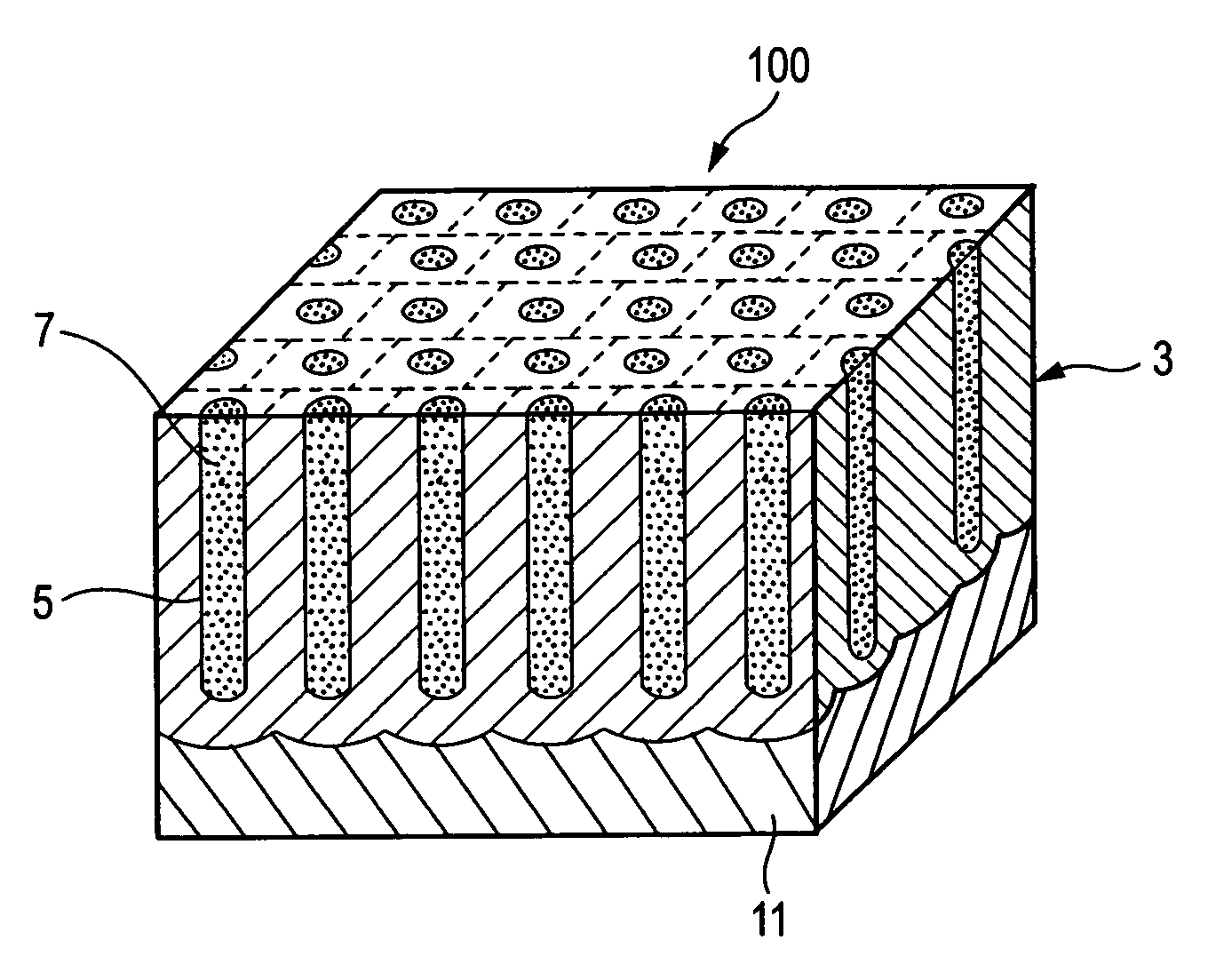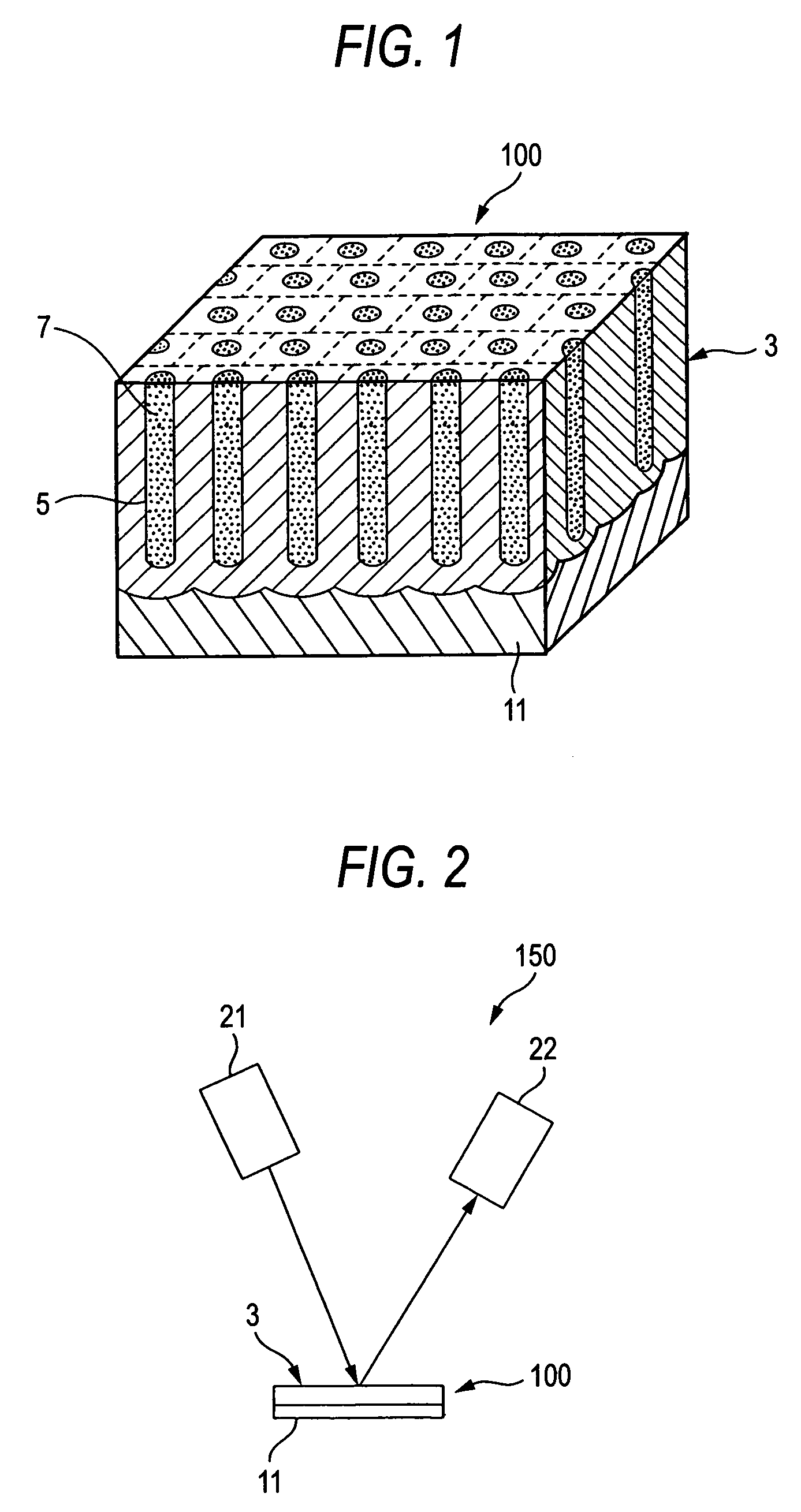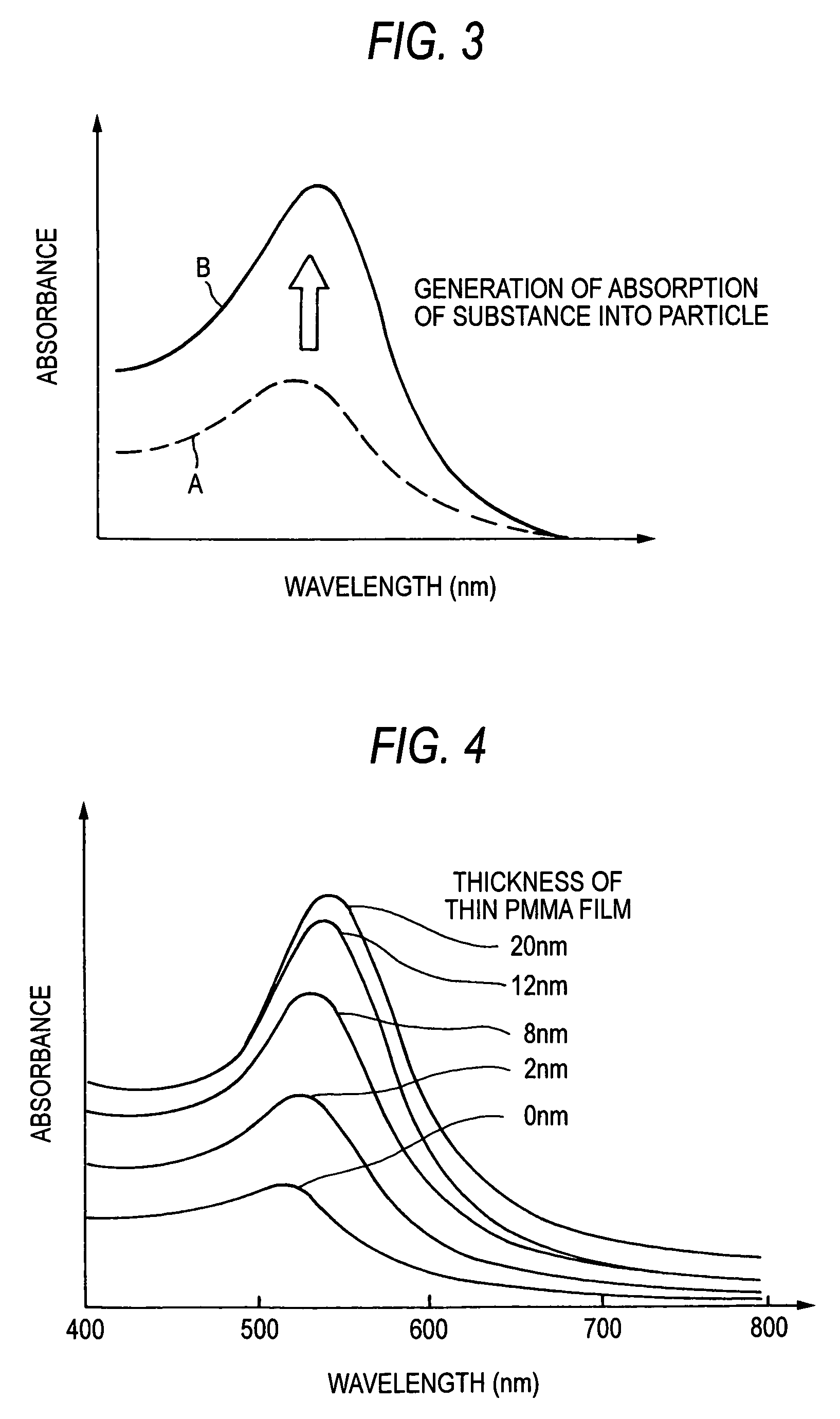Structure, structure manufacturing method and sensor using the same
a manufacturing method and sensor technology, applied in the field of structure manufacturing method and sensor using the same, can solve the problems of lowering the reliability of the sensing device and the difficulty of fabrication, and achieve the effect of improving and stabilizing the sensitivity of the sensor
- Summary
- Abstract
- Description
- Claims
- Application Information
AI Technical Summary
Benefits of technology
Problems solved by technology
Method used
Image
Examples
first embodiment
[0030]FIG. 1 is a perspective view showing a main part according to the structure in accordance with the invention and FIG. 2 is a view illustrating a state in which a measurement is carried out by using the structure as the sensor.
[0031]In a plasmon resonance device 100 according to an example of the structure in accordance with the invention, a metallic particle 7 is filled in each of a plurality of pores 5 of anodic oxide alumina 3 formed like a layer and a metallic particle dispersing element having the metallic particles isolated from each other is thus formed.
[0032]A method of manufacturing the anodic oxidized alumina 3 will be described below and the anodic oxidized alumina 3 has the pores 5 formed at almost regular intervals in an almost vertical direction with respect to a layer plane. In other words, the pores are provided regularly in the layer. For this reason, the metallic particles 7 filled in the pore 5 are isolated from each other and are provided regularly as a whol...
second embodiment
[0058]Next, the structure according to the invention will be described.
[0059]FIG. 8 is a sectional view showing the construction of a structure plasmon resonance device (structure) according to the embodiment. The same members as those shown in FIG. 1 have the same reference numerals and repetitive description will be omitted.
[0060]A plasmon resonance device 300 according to the embodiment has a hollow portion 23 which is not filled with a metal (gold) in the bottom portion of a pore 5. Other structures are the same as those of the plasmon resonance device 100 according to the first embodiment.
[0061]Also in the plasmon resonance device 300 thus constituted, a light beam is irradiated on the plasmon resonance device 300 from a light source and the absorbing spectrum of light reflected from or transmitted through the plasmon resonance device 300 is measured by a spectrophotometer to obtain an absorbance so that a change in the refractive index of a medium in the vicinity of the surfac...
PUM
| Property | Measurement | Unit |
|---|---|---|
| diameter | aaaaa | aaaaa |
| diameter | aaaaa | aaaaa |
| refractive index | aaaaa | aaaaa |
Abstract
Description
Claims
Application Information
 Login to View More
Login to View More - R&D
- Intellectual Property
- Life Sciences
- Materials
- Tech Scout
- Unparalleled Data Quality
- Higher Quality Content
- 60% Fewer Hallucinations
Browse by: Latest US Patents, China's latest patents, Technical Efficacy Thesaurus, Application Domain, Technology Topic, Popular Technical Reports.
© 2025 PatSnap. All rights reserved.Legal|Privacy policy|Modern Slavery Act Transparency Statement|Sitemap|About US| Contact US: help@patsnap.com



